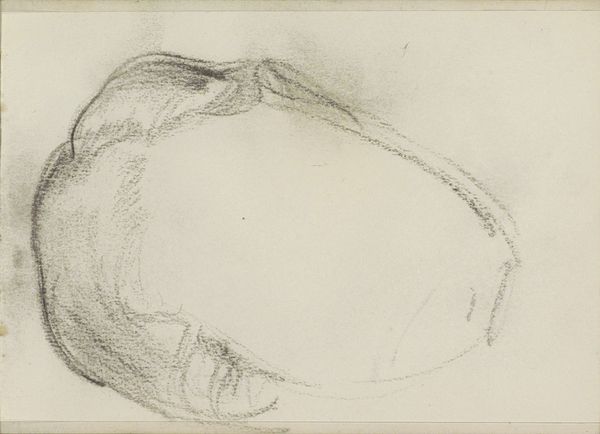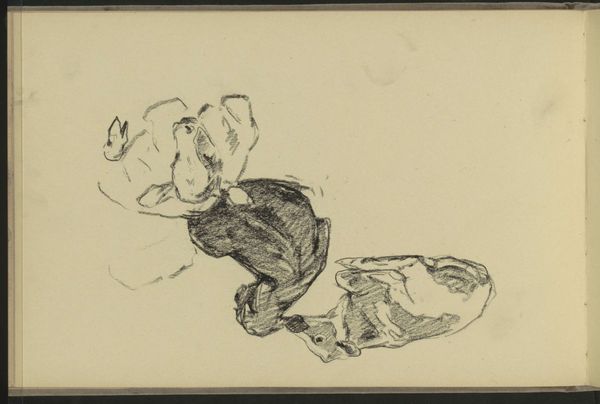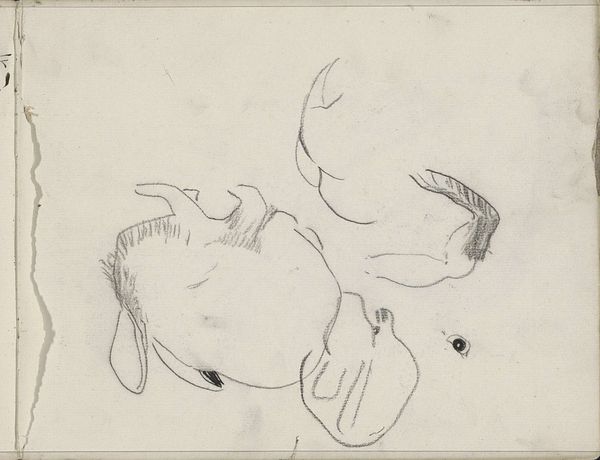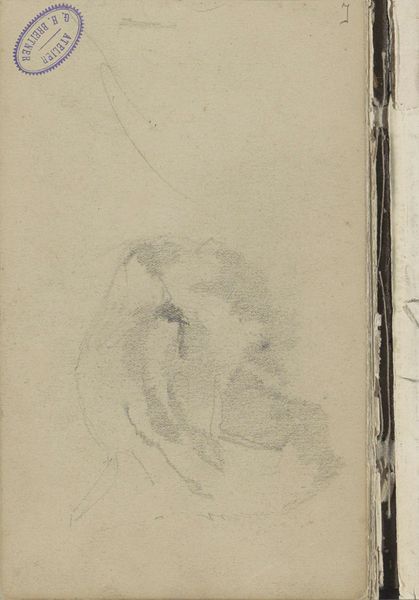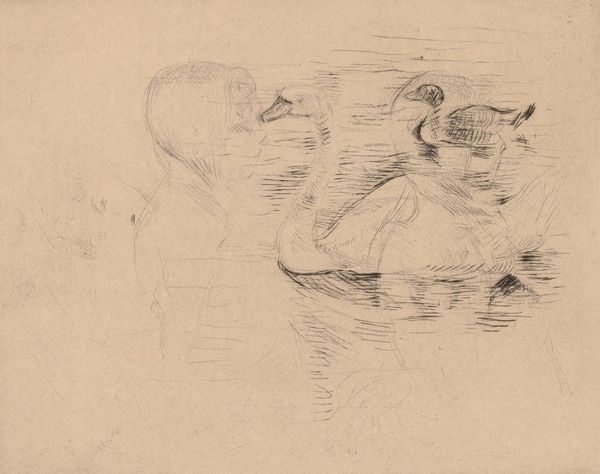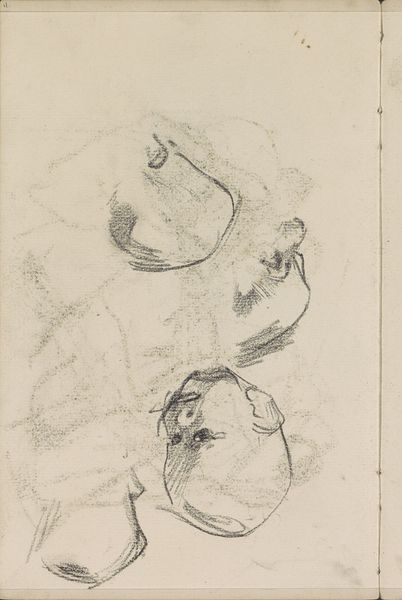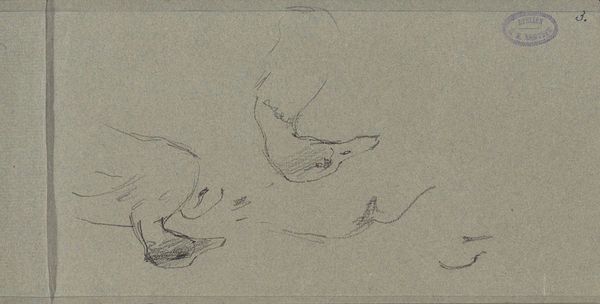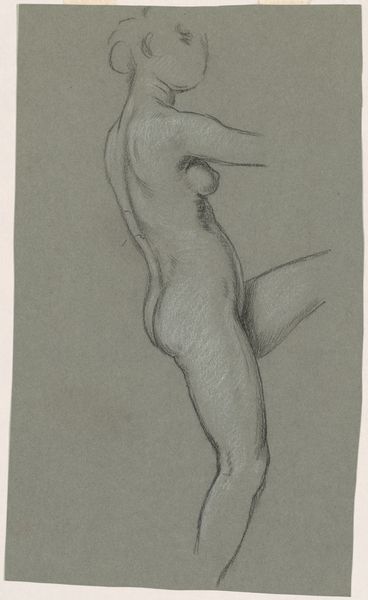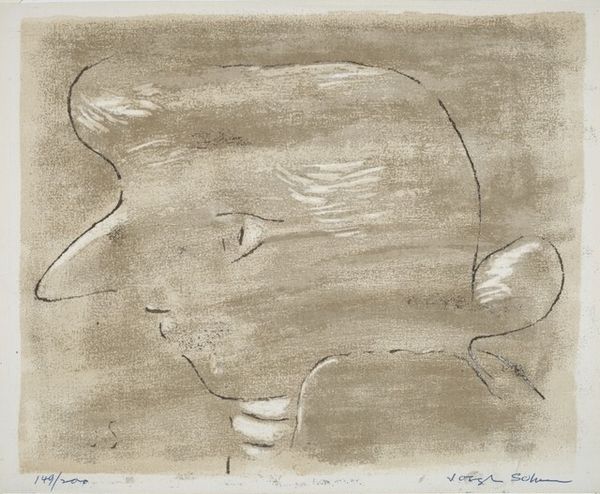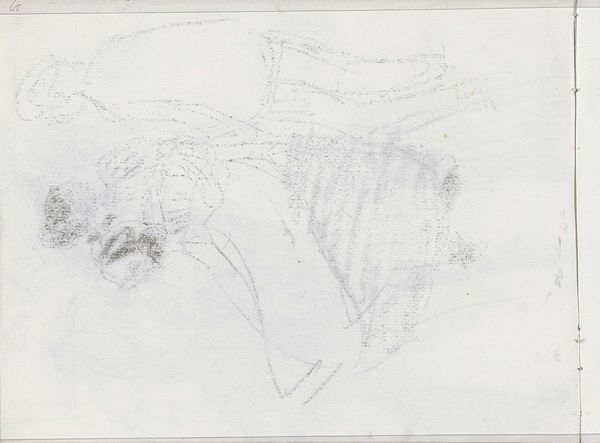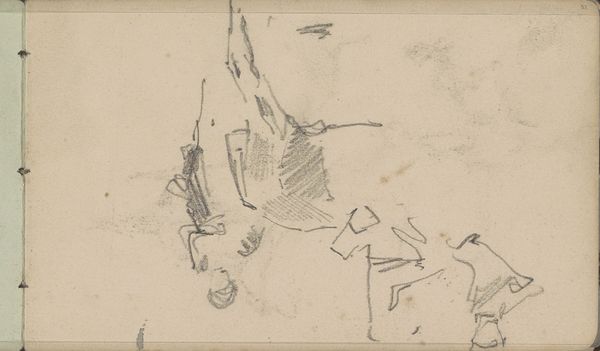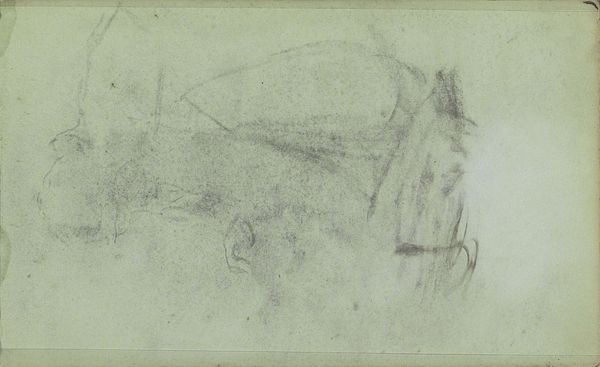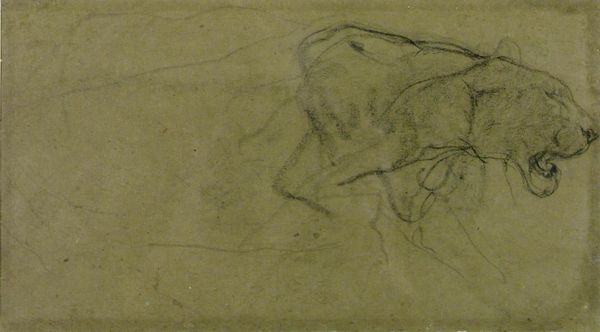
drawing, pencil
#
portrait
#
drawing
#
amateur sketch
#
statue
#
light pencil work
#
pencil sketch
#
incomplete sketchy
#
study drawing
#
idea generation sketch
#
character sketch
#
detailed observational sketch
#
pencil
#
portrait drawing
#
academic-art
#
realism
#
initial sketch
Copyright: Rijks Museum: Open Domain
Curator: This drawing, dated 1874, is entitled "Leeuwenkop, vermoedelijk naar een beeldhouwwerk," or "Lion's Head, presumably after a sculpture," by George Clausen. It's executed in pencil. Editor: The lion's head emerges tentatively from the paper's ground, with bold outlines only on the upper register, making me feel as if the statue depicted is still veiled and monumental. Curator: Given that the drawing is labelled 'after a sculpture,' its incompleteness suggests to me that this study could be instrumental to Clausen's practice: not aiming to reproduce an aesthetic object for decorative reasons but studying and working with an art-making tradition. Perhaps he was engaging with academic principles, or using classical forms to generate new ideas, or, as other sketches of his suggest, trying out initial sketches for a human portrait... Editor: I agree, its tentative form reveals an interesting push-and-pull relationship to light; observe how the shadowed underbelly implies volume while only the apex and a dramatic, darkened eye is fully resolved. The contrast creates a strong, almost unsettling focus. Note that its incompleteness has its own merit. The ground of the paper itself becomes an integral part of the depiction and lends the animal head a symbolic depth. Curator: What becomes interesting for me is the use of paper as ground in relation to the materiality of the referent; lion head statues in academic practice, or that populate architecture for instance, are made out of stone. Clausen makes use of this readymade availability to study not the physical material, but light's potential to define form. The artistic labor seems to be about learning, rather than portraying, and about how to make available art making resources in one's surrounding reality, making even copies or exercise, works of art in themselves. Editor: I'd say this unfinished quality focuses our attention less on the subject matter per se, and more on the very act of depiction and what the artistic sketch is for as a medium. We see Clausen's skill, his hand at work wrestling with shadow, proportion, texture—all captured in medias res, creating an immediate aesthetic experience that a finalized drawing or the original statue never could. Curator: The process of academic training, far from restrictive, fostered a freedom to select, reproduce and redefine artistic parameters with locally available materials that facilitated broader circulation. The availability of art resources as a vehicle for free art-making practices and skill building speaks loudly from Clausen's approach to art in the context of nineteenth century practice. Editor: Well, I'm glad we could both appreciate the raw vitality present in Clausen's approach here. Curator: Yes. Considering how "Leeuwenkop, vermoedelijk naar een beeldhouwwerk" allowed Clausen to freely engage with the larger dynamics of art-making through accessible resources surely brings something new to art interpretation.
Comments
No comments
Be the first to comment and join the conversation on the ultimate creative platform.
